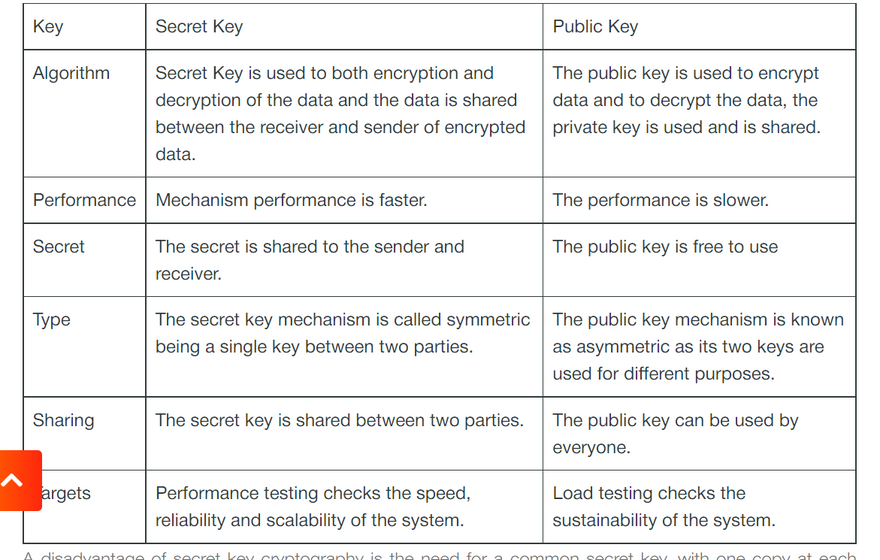secret key and public-key cryptography
secret-key-cryptography
Secret key cryptography is effective for communication over insecure channels as the piece of information or parameter used helps the information to encrypt and decrypt messages. There are two different keys used for asymmetric encryption in which one is a public key, the other is a secret key. A secret key may also be known as a private key. Let us explain secret-key cryptography and the difference between secret key and public-key cryptography.
What is Secret key Cryptography?
The secret key cryptography is used to encrypt the plaintext message using a series of bits called the secret key. It often uses the same key to decipher the corresponding ciphertext message and to retrieve the initial plain text because both encrypting and decrypting data is achieved with the same key, a secret key is often called as a symmetric key.
The secret key in cryptography is also an input for encryption algorithm as this is the initial intelligible message or data that is fed into the algorithm as input. The main is an algorithm value independent from the plaintext. Depending on the particular key used the algorithm outputs a different result. The algorithm relies on the key to exact substitution and transformation.
This is the scrambled message that has been generated as production. It depends on the plain text and on the secret key. Two different keys can generate two different ciphertexts for a given letter. The ciphertext is an almost random stream of data which as it stands. Decryption algorithm is basically a reverse-run encryption algorithm. It takes the ciphertext and the secret key, and it generates the original plain text.
In this type of cryptography, it is clear that both the sender and the receiver must know the key, that it is in effect, the password. The main distribution, of course, is the greatest challenge with this method.
Secret Key Cryptography Examples
A very basic method for encrypting messages is to replace each letter of the message with one that is a number of more places in the alphabet. The secret is the number of places. For eg, the message “This is an example” can be encrypted using the key “1 position” in the encrypted message “Uijt jt bo fybnqmf” Taking a letter that is 1 position above in the alphabet would end in the original message again.
This device is not very stable. Just twenty-six keys are possible. Eve should only try all the keys and see which one can result in a readable message. In addition, it is well known that certain letters appear more often in communications than others. For example, the letter “e” is the most commonly used letter in the English language. Using this reality, Eve can simply count the letter appears most frequently in the encrypted message and substitute it with the letter “e”. And she knows how many places she needs to rotate to get from “e” to the encrypted version of “e” and she knows the secret automatically.
Uses of secret key cryptography
With secret key encryption, both Alice and Bob communicators use the same key to encrypt and decode texts. Before any encrypted data may be transmitted across the network, both Alice and Bob must have the key and agree on the cryptographic protocol to be used for encryption and decryption.
One of the big issues with secret key cryptography is the logistical dilemma of how to get the key from one party to the other without giving access to the attacker. If Alice and Bob protect their data with secret-key cryptography, and if Charlie has access to their key, Charlie will understand any secret messages that Alice and Bob intercept. Not only can Charlie decode the messages of Alice and Bob, but he can also believe that he is Alice and send encrypted data to Bob. Bob is not going to realize that the letter came from Charlie, not Alice.
When the issue of secret key dissemination is overcome, secret key cryptography may be a powerful method. Algorithms provide excellent protection and encrypt data reasonably easily. The bulk of confidential data transmitted during an SSL session is sent using secret-key cryptography.
Secret key cryptography is often called symmetric cryptography since the same key is used to encrypt and decrypt data. Well-known hidden key cryptographic algorithms include Data Encryption Standard (DES), triple-strong DES (3DES), Rivest Cipher 2 (RC2), and Rivest Cipher 4 (RC4).
What is the difference between secret key and public-key cryptography?
Below is the difference between secret-key cryptography and public-key cryptography: –


Top comments (0)